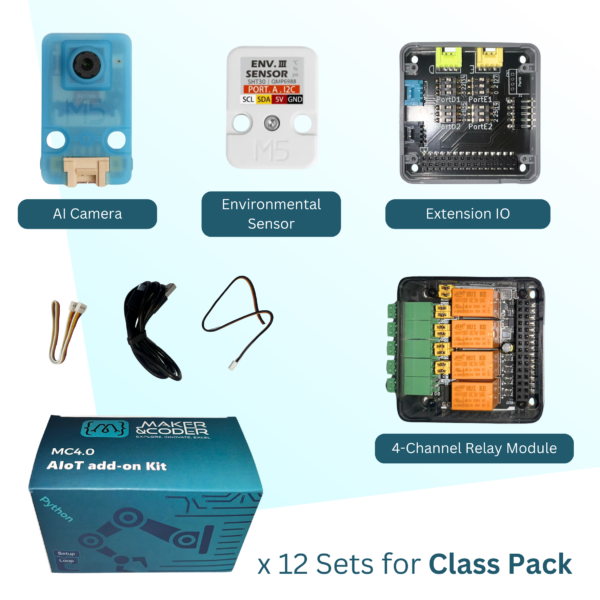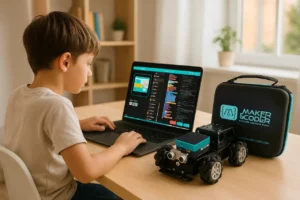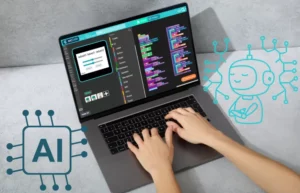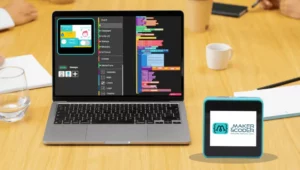In today’s fast-paced world, AI is more than just a buzzword—it’s the future. For teachers, introducing students to AI concepts can be daunting. However, with the right robotics kits, simplifying these complex ideas is easier than you think. Let’s dive into how you can make AI approachable and engaging for your students.
Choosing a Kit That Sparks Curiosity
Selecting the right robotics kit is the first step in making AI fun and accessible. Look for kits that offer interactive components and hands-on activities, allowing students to explore and experiment with AI technology in a way that intrigues them. It’s important to choose a kit that either incorporates or is compatible with AI & IoT technologies, as this will enable students to understand the broader applications of AI in the real world.
Additionally, a good robotics kit should provide a balanced approach to both hardware and software learning. Kits that offer modular components encourage students to disassemble and reassemble their creations, fostering mechanical as well as programming skills. This dual focus helps cultivate a comprehensive understanding of how AI systems operate, making the learning experience holistic and engaging.
Finally, consider the accessibility of programming platforms that accompany the robotics kit. A visual programming environment is invaluable for younger students or beginners, providing a straightforward introduction to coding concepts. For more advanced learners, the inclusion of languages like Python can open the door to complex programming capabilities, ensuring there is room for growth as students become more proficient.
Integrating Real-World Applications
Demonstrating AI’s practical uses can help bridge the gap between theory and practice. Use robotics kits to simulate real-world scenarios, showing how AI impacts industries like healthcare, automotive, or entertainment. This connection makes learning more meaningful and engaging. Students can explore scenarios such as designing an AI-powered healthcare assistant, giving them a glimpse into the potential careers AI technology can offer.
Furthermore, projects like creating an autonomous vehicle model can make students aware of the nuances involved in self-driving technology. By constructing such models, students can learn about sensor integration, data handling, and algorithm creation. These activities not only enhance understanding but also inspire future technologists to push the boundaries of what AI can achieve.
Creating Collaborative Learning Experiences
Robotics kits can encourage collaboration among students, fostering a team-based approach to solving AI challenges. Group projects not only enhance understanding but also build essential teamwork skills that are vital in today’s digital age. Organizing students into groups allows them to share diverse ideas, learn from each other, and collectively solve complex problems, mirroring real-world tech industry environments.
Encouraging Problem-Solving and Creativity
AI and robotics kits naturally nurture problem-solving and creativity. With open-ended projects, students can experiment creatively, learning how to address AI challenges while developing their innovative thinking skills. Encourage students to go beyond the kit’s design by integrating additional components or coding solutions, thus promoting an iterative process of trial and error.
Focusing on Progressive Learning
Progressive learning through robotics kits can help structure AI education effectively. By building on foundational concepts and gradually introducing more complex ideas, students can develop a deep and comprehensive understanding of AI technology over time. As the learning escalates, students who initially started with simple tasks like assembling sensors can move on to complex operations such as language processing or image recognition, solidifying their knowledge incrementally.
It’s key to adopt a scaffolded teaching approach that paces learning according to student readiness, ensuring that each student is both challenged and supported at every step. This method not only improves knowledge retention but also boosts student confidence, encouraging them to dive deeper into more advanced AI technologies.











